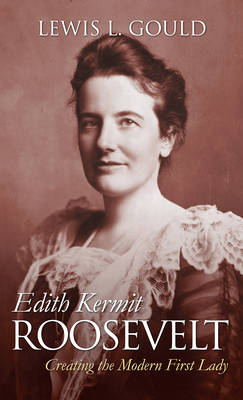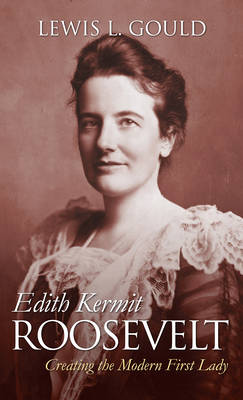
- Retrait gratuit dans votre magasin Club
- 7.000.000 titres dans notre catalogue
- Payer en toute sécurité
- Toujours un magasin près de chez vous
- Retrait gratuit dans votre magasin Club
- 7.000.0000 titres dans notre catalogue
- Payer en toute sécurité
- Toujours un magasin près de chez vous
Description
Few first ladies have enjoyed a better reputation among historians than Edith Kermit Roosevelt. Aristocratic and sophisticated, tasteful and discreet, she managed the White House with a sure hand. Her admirers say that she never slipped in carrying out her duties as hostess, mother, and adviser to her husband. Lewis Gould's path-breaking study, however, presents a more complex and interesting figure than the somewhat secularized saint Edith Roosevelt has become in the literature on first ladies. While many who knew her found her inspiring and gracious, family members also recalled a more astringent and sometimes nasty personality. Gould looks beneath the surface of her life to examine the intricate legacy of her tenure from 1901 to 1909. The narrative in this book thus uncovers much new about Edith Roosevelt. Far from being averse to activism, Edith Roosevelt served as a celebrity sponsor at a New York musical benefit and also intervened in a high-profile custody dispute. Gould traces her role in the failed marriage of a United States senator, her efforts to secure the ambassador from Great Britain that she wanted, and the growing tension between her and Helen Taft in 1908-1909. Her commitment to bringing classical music artists to the White House, along with other popular performers, receives the fullest attention to date. Gould also casts a skeptical eye over the area where Edith Roosevelt's standing has been strongest, her role as a mother. He looks at how she and her husband performed as parents and dissents from the accustomed judgment that all was well with the way the Roosevelt offspring developed. Most important of all, Gould reveals the first lady's deep animus toward African Americans and their place in American society. She believed "that any mixture of races is an unmitigated evil." The impact of her bigotry on Theodore Roosevelt's racial policies must now be an element in any future discussion of that sensitive subject. On balance, Gould finds that Edith Roosevelt played an important and creative part in how the institution of the first lady developed during the twentieth century. His sprightly retelling of her White House years will likely provoke controversy and debate. All those interested in how the role of the presidential wife has evolved will find in this stimulating book a major contribution to the literature on a fascinating president. It also brings to life a first lady whose legacy must now be seen in a more nuanced and challenging light.
Spécifications
Parties prenantes
- Auteur(s) :
- Editeur:
Contenu
- Nombre de pages :
- 182
- Langue:
- Anglais
- Collection :
Caractéristiques
- EAN:
- 9780700626519
- Date de parution :
- 09-02-18
- Format:
- Livre broché
- Format numérique:
- Trade paperback (VS)
- Dimensions :
- 152 mm x 229 mm
- Poids :
- 249 g

Les avis
Nous publions uniquement les avis qui respectent les conditions requises. Consultez nos conditions pour les avis.






